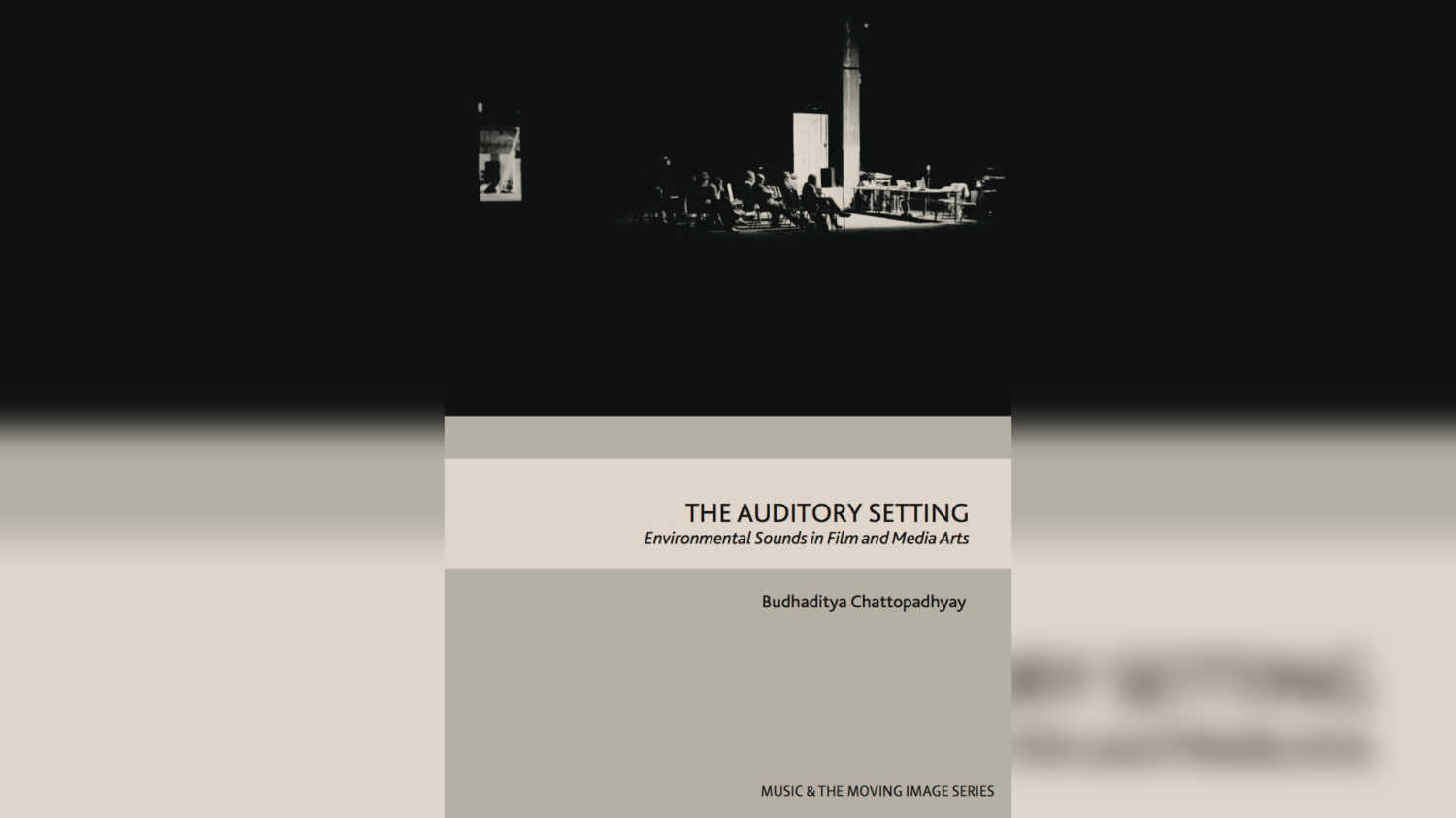Budhaditya Chattopadhyay's book is an in-depth study of the historical, technological and cultural evolution of the use, understanding and perception of environmental sounds in cinema and media.
Book review: The Auditory Setting opens the ears to the importance of ambient sound in cinema
Mumbai - 14 May 2021 2:30 IST


Shriram Iyengar
Of all the elements in cinema, sound, perhaps, draws the least attention. This is a by-product of its very nature. Impressive sound design ought not to be noticed, but felt. For the layman, this feeling cannot exist exclusive of the visual element. Understanding this element requires a combination of technical, historical and contextual knowledge. Budhaditya Chattopadhyay's work The Auditory Setting lays the groundwork for any keen student of sound in cinema, particularly environmental sounds.
Chattopadhyay throws light on the subject methodically and in great detail. The detail emerges through the writer's own research in the field of sound, his previous projects involving field recordings in the cities of Bengaluru, Varanasi and Kolkata.

The Auditory Setting is not a casual read. It is for the serious student of sound. The author emphasizes formalist critic Bela Balazs's quote, "Sound’s role is to reveal for us our acoustic environment, the acoustic landscape in which we live."
The book is conveniently divided into four key parts. The first deals with the subject matter and definitions. The second deals with the technological evolution of recording sound and historic changes in concepts and perceptions. The third part references the use of this technology in key moments in cinema in India and internationally, leading to the conclusion.
The book goes to great lengths to explain the role of ambient sound and the many layers it seemingly entails. One enlightening example is the difference between how Ritwik Ghatak used the sound of a river in Titash Ekti Nadir Naam (1973) and Satyajit Ray's use of a similar setting in Apur Sansar (1959), and how each technique is reflective of the filmmaker's philosophy.
This depth of analysis, which is applied across genres, filmmakers and eras, is engrossing. The more one reads about various anecdotes and the views of multiple critics and filmmakers, the better one understands how latent environmental sounds effect sequences. These range from Ray to Dibakar Banerjee, Francis Ford Coppola to Apichatpong Weerasethakul and Lars Von Trier, among others. The examples are numerous, and each offers a different perspective and insight on the experience of sound in cinema.
All in all, this book is a fine addition to the library of any student of sound or cinema. It also introduces one to the works of critics as well as theories and topics that one doesn't usually encounter in a casual setting.
The Auditory Setting: Environmental Sounds in Film Media & Arts is published by The Edinburgh University Press. Click here to order your copy.
Related topics
Book review



